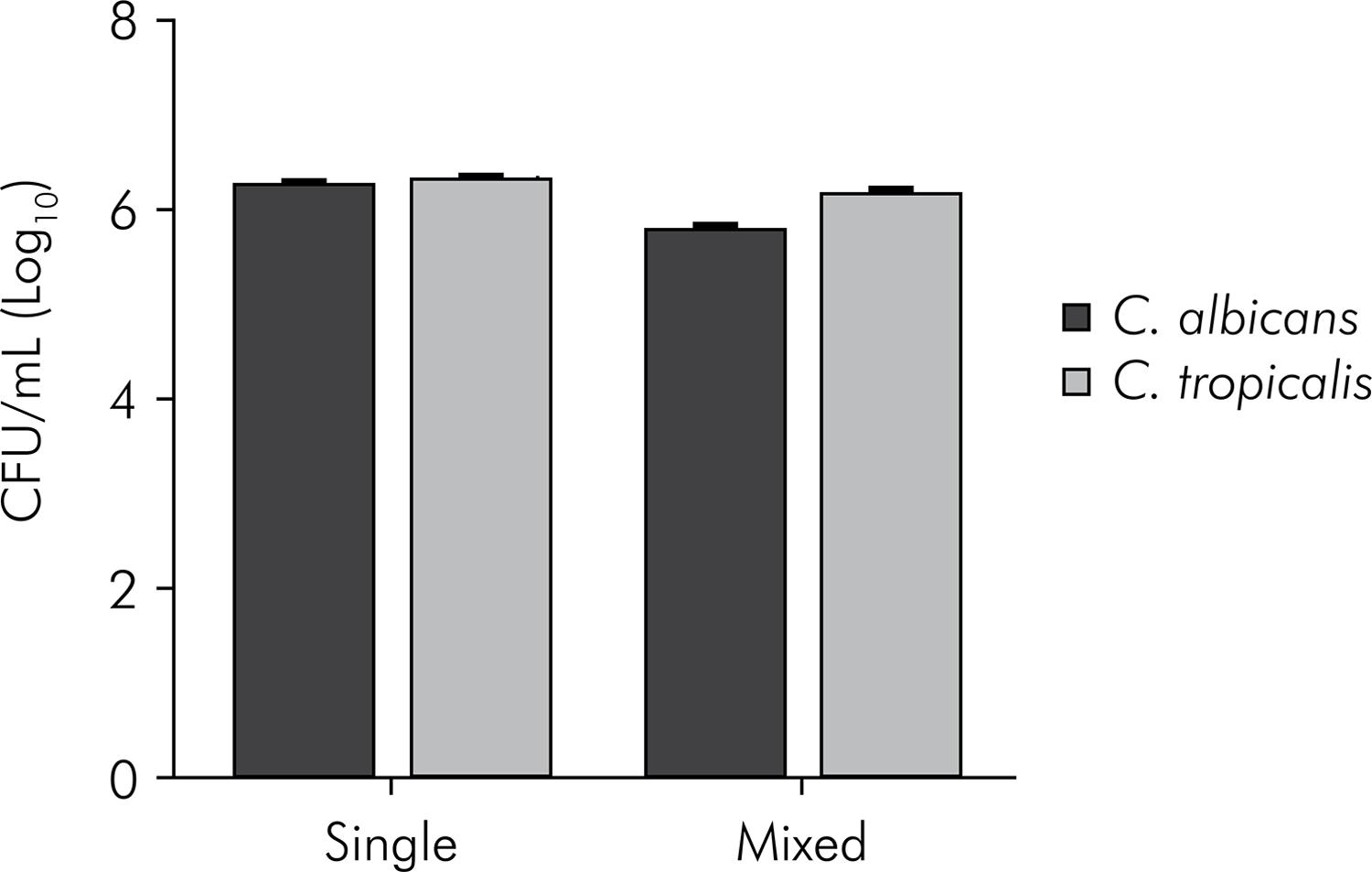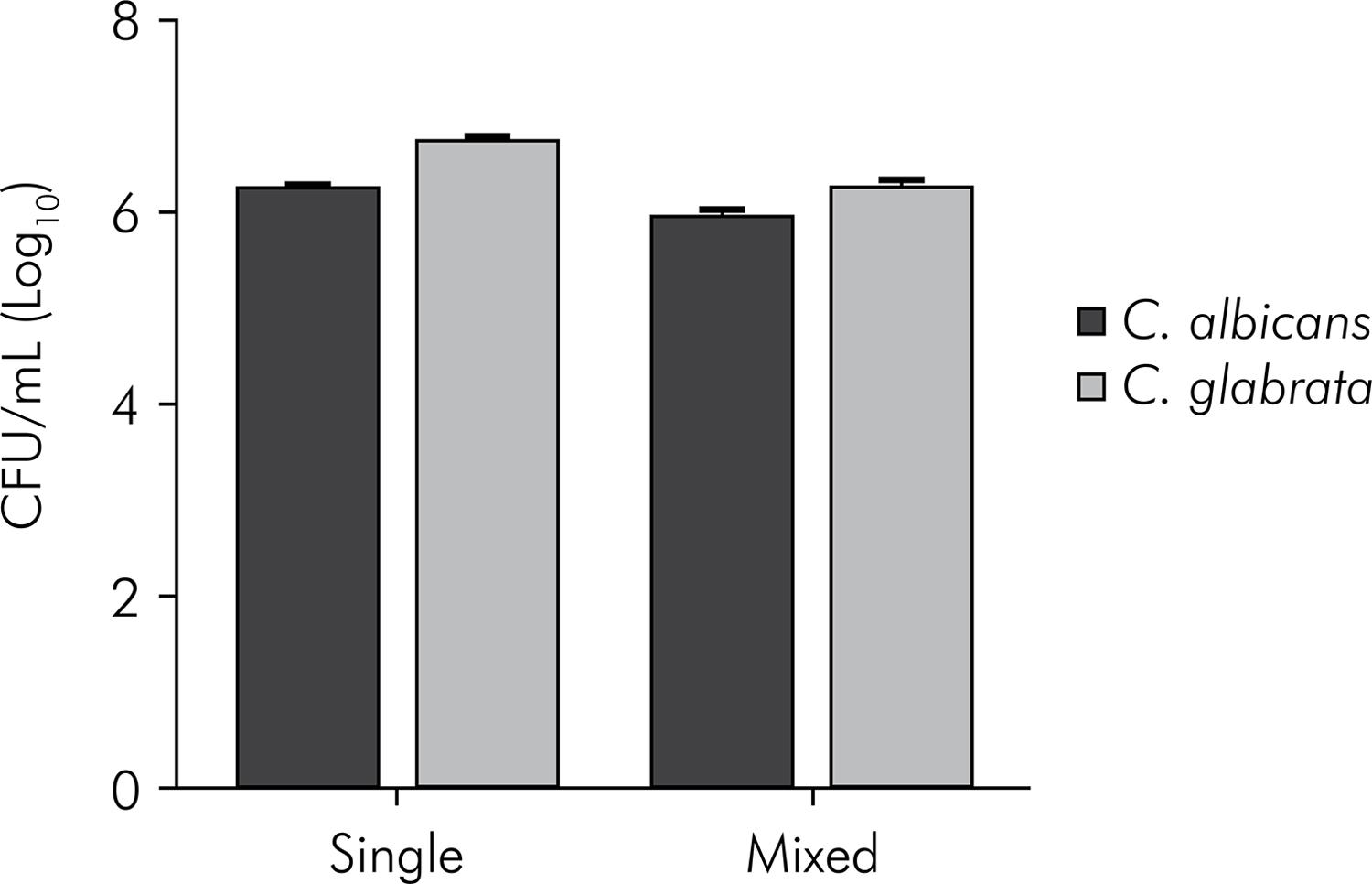Abstract
Most Candida infections are related to microbial biofilms often formed by the association of different species. The objective of this study was to evaluate the interactions between Candida albicans and non-albicans species in biofilms formed in vitro. The non-albicans species studied were:Candida tropicalis, Candida glabrata andCandida krusei. Single and mixed biofilms (formed by clinical isolates of C. albicans and non-albicans species) were developed from standardized suspensions of each strain (107 cells/mL), on flat-bottom 96-well microtiter plates for 48 hour. These biofilms were analyzed by counting colony-forming units (CFU/mL) in Candida HiChrome agar and by determining cell viability, using the XTT 2,3-bis (2-methoxy-4-nitro-5-sulphophenyl)-5-[(phenylamino) carbonyl]-2H-tetrazolium hydroxide colorimetric assay. The results for both the CFU/mL count and the XTT colorimetric assay showed that all the species studied were capable of forming high levels of in vitro biofilm. The number of CFU/mL and the metabolic activity of C. albicans were reduced in mixed biofilms with non-albicans species, as compared with a singleC. albicans biofilm. Among the species tested, C. krusei exerted the highest inhibitory action against C. albicans. In conclusion, C. albicans established antagonistic interactions with non-albicans Candida species in mixed biofilms.
Candida albicans; Candida glabrata; Candida tropicalis; Biofilms




